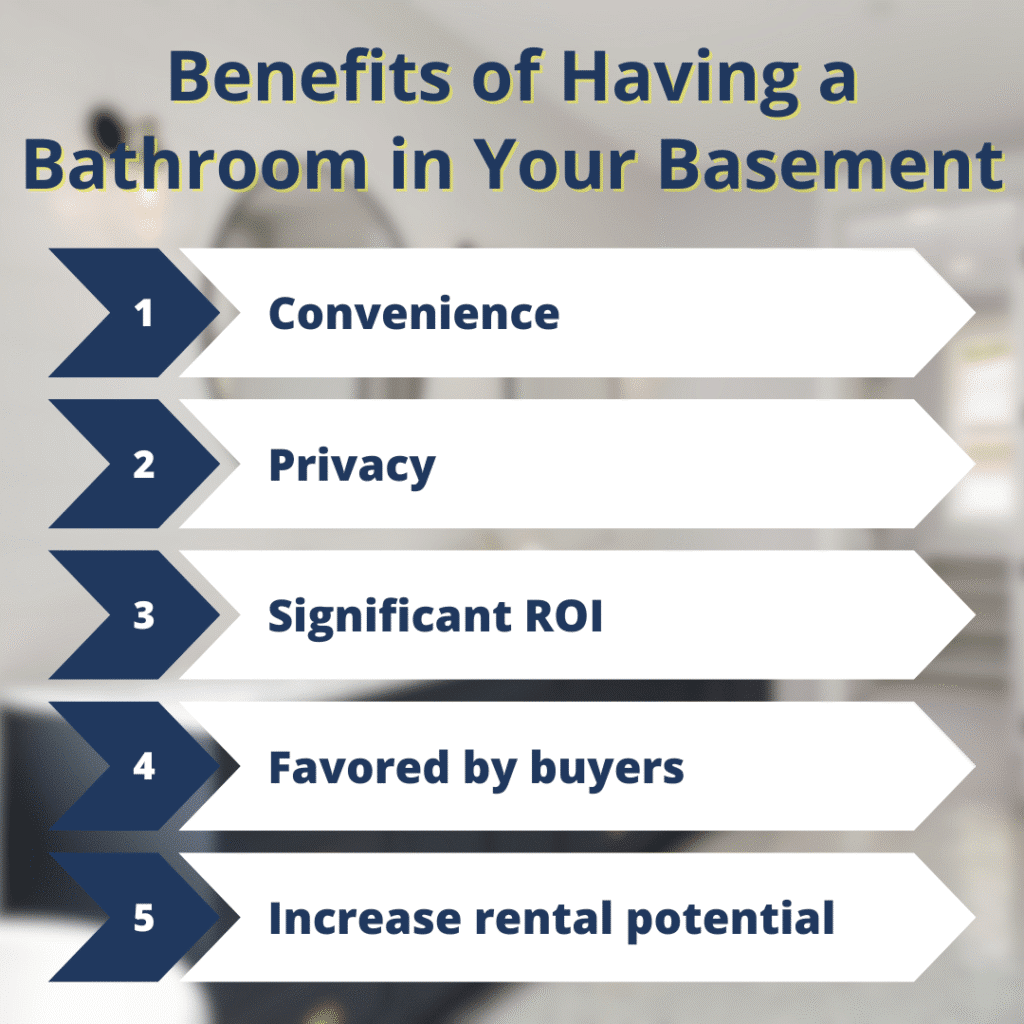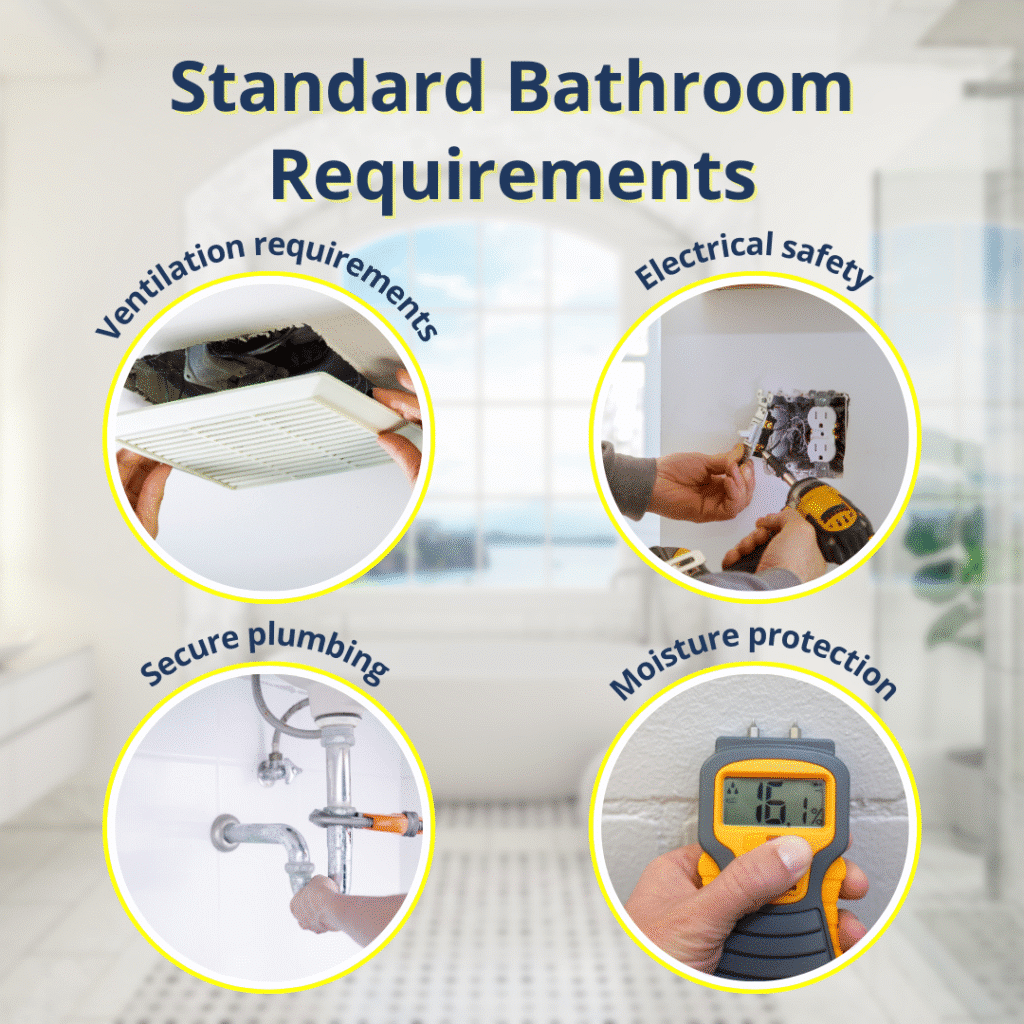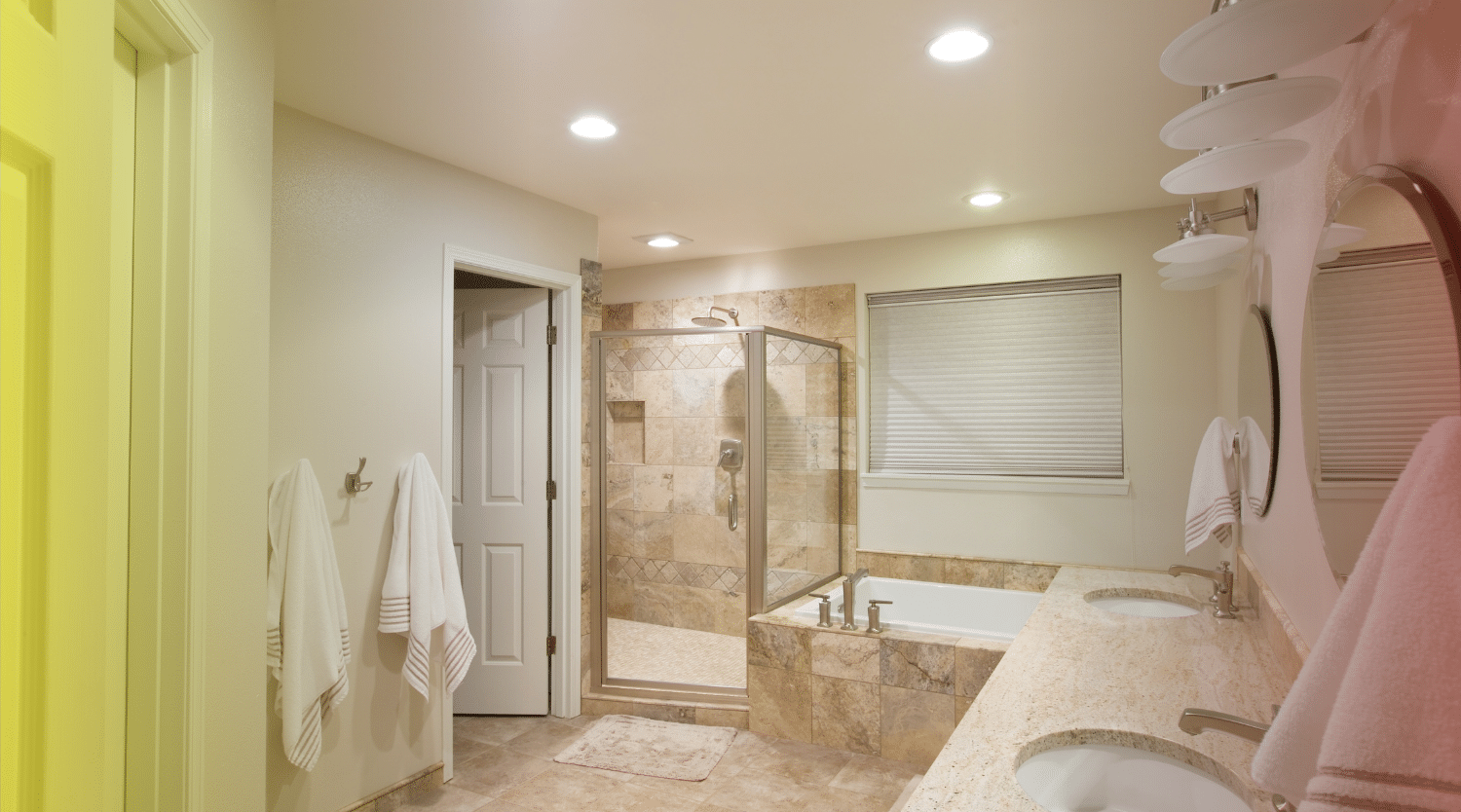Adding a bathroom to your basement is a smart way to increase comfort, convenience, and property value. But the success of your project doesn’t just depend on design; it depends on plumbing and drainage.
Without proper planning, homeowners often face costly water damage, mold growth, or failed inspections later.
This guide explores practical basement bathroom ideas with a focus on plumbing and drainage, along with inspection tips to help you avoid expensive mistakes.

Why a Bathroom in the Basement?
The benefits of adding a bathroom to your basement go well beyond convenience. A basement bathroom makes life easier for families by cutting down on trips upstairs, which is especially useful for children, guests, or elderly relatives.
It also creates a sense of privacy, which is ideal if you’re turning the basement into a guest suite, in-law apartment, or entertainment area.
From a financial perspective, the return on investment is significant. Remodeling Magazine’s 2024 Cost vs. Value Report estimates that bathroom additions typically recoup between 33%-35% of their cost at resale.
However, the hidden side of a basement remodel is that many basements come with plumbing and moisture challenges that can be costly if overlooked. This is why an inspection before starting your project is critical.
A home inspection can reveal issues like improper drainage, foundation cracks, or mold that need to be addressed before construction begins.
Planning a Basement Bathroom with Plumbing in Mind
The planning stage is critical. One of the biggest questions is whether your basement has access to existing plumbing lines. If it doesn’t, you may need an upflush toilet system or sewage ejector pump to carry waste upward into the main sewer line.
These systems can cost anywhere from $850 to $3,000, so factoring them into your budget early is essential
Drainage is equally important. Pipes must be sloped correctly to carry water away, and basements without proper grading often experience standing water issues. During inspections, it’s common to see signs of poor drainage, such as damp flooring, mold around pipes, or water stains on foundation walls.
Ventilation is another piece of the puzzle. Bathrooms add moisture to a space that’s already prone to dampness. Without an exhaust fan or dehumidifier, the risk of mold and mildew skyrockets.
The Environmental Protection Agency recommends keeping indoor humidity below 60 percent to prevent mold, which is a common problem inspectors see in basements with poor airflow. Finally, ceiling height matters.
Basement Bathroom Ideas for Small Spaces
Even a small basement can house a bathroom if plumbing and drainage are properly designed.
Compact layouts with corner sinks or showers minimize the amount of new piping needed, saving both space and money.
Wall-mounted toilets are another solution, reducing footprint while also streamlining the plumbing layout.
For narrow basements, sliding or pocket doors eliminate the clearance space traditional doors require, giving plumbers and inspectors more room to route pipes effectively.
Good lighting and light-colored finishes also help make smaller spaces feel open, even if plumbing restricts certain layouts.
Modern Basement Bathroom Ideas to Add Value
While design upgrades matter, the way these features are installed from a plumbing and drainage perspective is just as important. Poor plumbing can turn even the most luxurious bathroom into a costly liability, which is why professional planning and inspections are key.
- Walk-in showers with glass doors: These add a spa-like feel and are more accessible for aging homeowners. From a plumbing standpoint, these showers often require linear drains or curbless entries, which must be sloped precisely to prevent water from pooling on the floor. If the drainage isn’t correct, you could end up with leaks beneath the tile or standing water that damages the subfloor. Inspectors frequently check shower drain installations to confirm that water flows properly into the sewer line without risk of backups.
- Heated floors: Radiant floor heating costs about $5–$15 per square foot, but it adds comfort during cold months and is seen as a luxury feature. However, installing them requires proper waterproofing and plumbing coordination. If pipes or electrical elements are not sealed correctly, moisture can seep beneath the flooring, leading to hidden leaks and mold growth. An inspection helps ensure that heating and plumbing systems are integrated safely.
- Smart technology: Touchless faucets and LED mirrors improve convenience while reducing water and energy waste. Smart moisture sensors can also alert you to leaks before they cause damage. From a plumbing perspective, these upgrades rely on secure water connections and modern shut-off valves to prevent leaks.
- Eco-friendly fixtures: Low-flow toilets save up to 13,000 gallons of water per year according to the EPA. Cutting utility bills and appealing to eco-conscious buyers. While these fixtures reduce water use, they must still be connected to properly vented plumbing lines to maintain adequate flushing power and drainage.
These features can set your home apart on the market while creating long-term savings.
Basement Bathroom Ideas on a Budget
Building a basement bathroom doesn’t have to cost a fortune, but cutting corners on plumbing almost always leads to problems. A bathroom that looks great on the surface can still hide plumbing leaks, poorly sloped drains, or venting issues that result in mold, water damage, or even sewage backups. Budget-friendly choices include:
- Vinyl plank flooring keeps costs down while giving you a durable, waterproof surface that can handle basement humidity
- Prefab shower kits is a cost-friendly choice, offering easy installation and reliable performance without the labor costs of a custom tile shower
- Repainting or refinishing existing vanities instead of buying new ones can also help stretch your budget. These upgrades make the bathroom functional and attractive without compromising safety.
The real trouble comes when homeowners try to tackle plumbing or drainage themselves. Incorrect installations can cause hidden leaks behind walls or under flooring.
Over time, this moisture can lead to foundation damage, wood rot, and mold growth that spreads to other parts of the home. Repairing those issues often costs far more than hiring a professional plumber or inspector in the first place.
This is where a professional inspection becomes invaluable. An inspector will evaluate your plumbing layout, confirm that pipes are properly sloped for drainage, and check that all connections meet local codes. They’ll also identify early warning signs of water damage or mold that could compromise your remodel.
By catching these issues before they escalate, a home inspection ensures your budget-friendly bathroom project stays safe, functional, and cost-effective in the long run.
General Bathroom Safety Standards
Basement bathrooms must meet strict codes to ensure safety and prevent costly mistakes. Skipping these requirements may save time at first, but it often leads to expensive repairs, moisture problems, or failed inspections when selling your home.
Here are the most important points to keep in mind:
- Ventilation requirements: Most building codes require bathrooms without windows to have an exhaust fan. Fans should move at least 50 cubic feet of air per minute to remove moisture effectively. Without proper airflow, basements are especially prone to mold, which can spread quickly through the home. During a home inspection, inspectors often look for signs of hidden mold caused by poor ventilation.
- Electrical safety: All outlets in basement bathrooms must be GFCI-protected to prevent shocks. This is a common problem area in older homes where bathrooms may not have been updated. Inspectors will test outlets and ensure they are properly grounded and up to current safety codes.
- Plumbing permits: Skipping permits or using unlicensed work may seem like a shortcut, but it almost always backfires. If you decide to sell your home, inspectors can flag unpermitted plumbing or electrical work, and buyers may walk away or demand costly corrections.
- Moisture protection: Basements naturally attract moisture, and bathrooms add even more risk. Without waterproofing, mold can develop in as little as 24–48 hours after water exposure. Inspectors look for water damage, cracks in foundation walls, and leaks around plumbing fixtures to help homeowners catch issues before they grow worse.
Hiring a certified home inspector ensures your basement bathroom is safe, functional, and compliant with local building codes.

Related Questions
How much does it cost to add a basement bathroom with proper plumbing?
Most projects cost between $5,000 and $75,000, with plumbing setup making up a large portion of that budget.
Do I need a special toilet for a basement bathroom?
Often, yes. Many basements require an upflush or ejector pump toilet to move sewage upward into the sewer line.
Can poor drainage cause problems in a basement bathroom?
Absolutely. Improper drainage can lead to water damage, foundation cracks, and mold growth.
Will a home inspection check basement bathroom plumbing?
Yes. Inspectors evaluate plumbing lines, drainage slope, ventilation, and waterproofing to ensure everything is safe and up to code.
Do basement bathrooms need special ventilation?
Yes, because basements tend to trap moisture. Vent fans are necessary to prevent mold, and in many cases, a dehumidifier can help maintain healthy humidity levels.
Conclusion
Adding a basement bathroom is one of the most practical and valuable upgrades you can make. From simple layouts designed for small spaces to modern features that increase resale appeal, there are solutions for every homeowner and budget. The key is planning carefully, focusing on safety, and ensuring your remodel meets code requirements.
Before you begin or after the work is complete, scheduling a professional inspection is one of the best steps you can take. It ensures your basement bathroom isn’t just stylish but also safe and built to last.
Ready to move forward? Schedule your home inspection today and give your basement bathroom upgrade a strong foundation.

